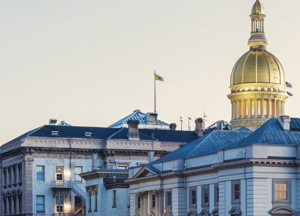 Generative AI (artificial intelligence) is not just the wave of the future, it is the wave of today. You hear about its uses in every sector of life. Government, which ideally should aim for peak efficiency, is using AI at very different levels. The state has taken initiative to utilize it, offering increasing opportunities for agencies to incorporate it into what they do. County and municipal governments, though dabbling, still seem to have a ways to go.
Generative AI (artificial intelligence) is not just the wave of the future, it is the wave of today. You hear about its uses in every sector of life. Government, which ideally should aim for peak efficiency, is using AI at very different levels. The state has taken initiative to utilize it, offering increasing opportunities for agencies to incorporate it into what they do. County and municipal governments, though dabbling, still seem to have a ways to go.
MUNICIPAL USE
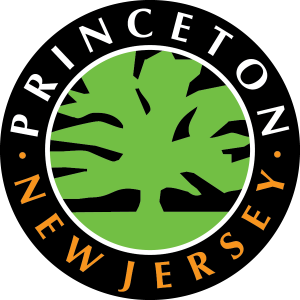 Princeton, for example, has barely integrated any uses of artificial intelligence into its operations and systems. The police department has explored opportunities but thus far has not found the tools available to be beneficial, especially with the additional loopholes of security protection needed for much of what they do. Ewing similarly has not shifted any core functions to AI, attempting some basic creative tasks at best, but often finding the human element is still very much essential. This seems to be the norm across New Jersey municipal governments.
Princeton, for example, has barely integrated any uses of artificial intelligence into its operations and systems. The police department has explored opportunities but thus far has not found the tools available to be beneficial, especially with the additional loopholes of security protection needed for much of what they do. Ewing similarly has not shifted any core functions to AI, attempting some basic creative tasks at best, but often finding the human element is still very much essential. This seems to be the norm across New Jersey municipal governments.
“It’s not that they don’t want it, it’s that they don’t understand it just yet,” shares Mt. Arlington Mayor Mike Stanzilis, who also works as a consultant on AI implementation and integration. Stanzilis serves on the Board of New Jersey League of Municipalities (NJLM) and the NJ Conference of Mayors, and organized panels on AI at the past two NJLM conferences. He often hears municipal staff voice fears of having their jobs replaced by AI.
“Right now, no one thinks they need AI, they don’t want it and there’s no pain point. The day before the iPod came out, no one said, ‘I need a thing the size of a small cell phone that can hold 500 songs. I’m tired of carrying around CDs.’ No one had that pain, there was no pain point. Steve Jobs put that out and soon everyone needed it. Similarly, no one is saying they need an AI model, but once it becomes apparent how good this is, there will be a pain point. The early adaptors will lead the way, and other towns will want it.”
 Mt. Arlington is one of those towns jumping in, having already integrated an AI chatbot into its municipal website to help locate detailed answers to residents’ inquiries quickly. It’s their AI Ambassador, as Stanzilis likes to call it, an outward-facing utilization. But there are also many internal functions of AI that can strongly assist local government, such as doing research on purchasing needs, handling OPRA requests and helping in the tax & finance departments. There, AI seeks to create efficiencies, not eliminate roles. One hurdle is that you have to be able to train the AI model on your town’s data for it to work well, and that requires security for the quantities of delicate data a municipality handles. There are large language models that exist with security features built in, but local governments must be willing to dip their toes in and try them.
Mt. Arlington is one of those towns jumping in, having already integrated an AI chatbot into its municipal website to help locate detailed answers to residents’ inquiries quickly. It’s their AI Ambassador, as Stanzilis likes to call it, an outward-facing utilization. But there are also many internal functions of AI that can strongly assist local government, such as doing research on purchasing needs, handling OPRA requests and helping in the tax & finance departments. There, AI seeks to create efficiencies, not eliminate roles. One hurdle is that you have to be able to train the AI model on your town’s data for it to work well, and that requires security for the quantities of delicate data a municipality handles. There are large language models that exist with security features built in, but local governments must be willing to dip their toes in and try them.
“I recommend not going it alone as a town but using professionals and vendors like you would lawyers, engineers, planners. As elected leaders we have to be prudent stewards of the taxpayers’ hard-earned money. We can’t afford to experiment with their money. But in the private sector, they can afford and have to experiment to stay relevant. Look at frontier AI companies and they’ll have the great ideas we can utilize,” Stanzilis explains. “My hope is, as Mayor, to utilize these tools and then I can spend more time doing higher-level stuff. More time getting back out to residents’ needs quickly, the ones that can’t be answered by AI tools. Get out there and really be the face of the town.”
Hopewell Township has not yet fully integrated AI into its systems, but it has found interfaces like ChatGPT to be extremely helpful in reducing staff workload and streamlining efficiency.
“Communications is a big chunk of my role here, so I use it frequently! I am aware that the Business Administrator had been using it for several months to improve efficiency while there was no one in my role (prior to my starting here),” shares Fiona Lenzo, Confidential Executive Assistant to Administration at Hopewell Township. Lenzo says AI has saved her at least two hours per written press release. “The Administration Department utilizes it on a daily basis. Within the past several months, I know that some other departments have been utilizing it to assist with technology. For example, it is a great tool for learning how to use new websites, which can save time in training. The police department is potentially looking into AI technology for next year.”
By providing clearer and more timely information to its residents, Hopewell Township aims to continue and improve on its utilizations of technology while being constantly mindful to remove any sensitive details to protect the community.
Hopewell Township and Mt. Arlington are still the few across the state. By this time next year, things may be different.
“I do believe a tidal wave is coming in municipalities. In the next 2 years it will be the majority, not the minority, using it,” Stanzilis predicts. “I’m already starting to see a massive paradigm shift with government folks in a positive direction.”
COUNTY UTILIZATIONS
County governments seem to be on a similar course to their municipal cohorts. Some have delved in and are learning its benefits. Still most are reluctant or hesitant, at best.
Middlesex County has its own version of an AI Ambassador interactive chatbot. It is the first county in NJ to utilize AI in this way, supporting residents’ interactions on the county website. Its attempt at making government more approachable earned Middlesex the 2025 Service-First Award for its deployment.
 Mercer County is interested, but adoption is going slowly. The capital county has begun to utilize a system called CommsCoach QA, to assist with emergency communications. As calls come in via radio or phone, they are immediately evaluated by AI. Once flagged by the system, they are further reviewed by a human, but the technology enables the team to evaluate the quality of response, identify and reinforce the strengths, document performance trends and provide actionable feedback.
Mercer County is interested, but adoption is going slowly. The capital county has begun to utilize a system called CommsCoach QA, to assist with emergency communications. As calls come in via radio or phone, they are immediately evaluated by AI. Once flagged by the system, they are further reviewed by a human, but the technology enables the team to evaluate the quality of response, identify and reinforce the strengths, document performance trends and provide actionable feedback.
STATE INCORPORATIONS OF AI
Using AI to assist with phone call analyzation is also taking place at the state level. At the ANCHOR property tax program call center, AI helps generate better menu options, enabling residents to resolve their concerns 50% more than previously.
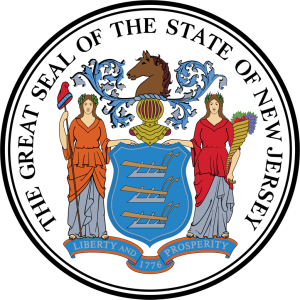 At the state level, there is still room to utilize its full potential, but the commitment and efforts are much further along. The New Jersey Artificial Intelligence Task Force was created in October 2023 soon followed by plans for the NJ AI Hub in December 2023 (which officially opened in Princeton in March 2025). NJ AI Assistant, the AI tool used by state employees, was unveiled in July 2024. Today, more than 15,000 public employees across the state (20% of the workforce) have utilized NJ AI Assistant.
At the state level, there is still room to utilize its full potential, but the commitment and efforts are much further along. The New Jersey Artificial Intelligence Task Force was created in October 2023 soon followed by plans for the NJ AI Hub in December 2023 (which officially opened in Princeton in March 2025). NJ AI Assistant, the AI tool used by state employees, was unveiled in July 2024. Today, more than 15,000 public employees across the state (20% of the workforce) have utilized NJ AI Assistant.
“Last year, we developed a secure AI Assistant (adapting some tools from OpenAI and Microsoft Azure) that allowed us to get a general-purpose generative AI tool into the hands of employees quickly and securely,” NJ Chief Innovation Officer Dave Cole shares. “In addition, we developed a popular training program with our partner InnovateUS, which has been taken by thousands of public professionals throughout the state. Some agencies have practically all of their employees trained. The training is now being used in dozens of states and jurisdictions nationwide.”
An impact report was released last month by the NJ Office of Innovation which shows the growth and influence such technology has had both internally and with regards to services outward for state residents. For example, AI was used to search multiple state databases and locate around 100,000 children who were eligible for summer grocery benefits but not yet receiving them. Additionally, 65,000 businesses launched statewide through Business.NJ.gov, a site that uses AI to transform the way small business owners and entrepreneurs can get their ideas up and running.
“This report reflects that innovation is more than just trying new things — it’s about finding the most effective and efficient ways to solve real challenges,” said Cole. “That’s how we are working every day to uplift all New Jerseyans, through better government services that deliver measurable results.”
The state has been tracking how many times the AI tool is utilized, and repeatedly surveys employees on its use. The goal is for it to enhance what they are doing and improve the worker experience whether drafting internal documents, analyzing data and more.
“AI’s primary value for our state government has been to augment – not replace – the hard work our departments and agencies are doing, especially as we look to attract and retain a talented workforce. Tools like this help them focus on higher-level tasks while freeing up time to serve more New Jerseyans and to serve them better,” says Cole.
Using its successes and failures can be beneficial to others across the state as well. Last week, New Jersey was awarded a grant by the Center for Civic Futures that will enable it to further work on testing, problem solving, and sharing AI resources to improve the lives of New Jerseyans.
“We engage regularly with municipalities, nonprofits, and hubs throughout New Jersey that want to learn about our AI approaches and tools. This has included agencies focused on data and technology as well as those involved in transportation, education, and other public services,” Cole adds. “We are looking to build out more AI tools and share more in the future.”
WHAT AI CAN BE
It appears the opportunities for AI are there and growing. While we value our elected officials for the skills, time and energy they bring and appreciate all of the public employees that make things happen throughout our towns, counties and state on a daily basis, it will be interesting to see the way things transform through technology in the years to come.
Lisa Jacknow spent years working in national and local news in and around New York City before moving to Princeton. Working as both a TV producer and news reporter, Lisa came to this area to focus on the local news of Mercer County at WZBN-TV. In recent years, she got immersed in the Princeton community by serving leadership roles at local schools in addition to volunteering for other local non-profits. In her free time, Lisa loves to spend time with her family, play tennis, sing and play the piano. A graduate of the S. I. Newhouse School of Public Communications at Syracuse University, Lisa was raised just north of Boston, Massachusetts but has lived in the tri-state area since college. She is excited to be Editor and head writer for Princeton Perspectives!
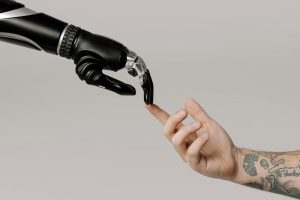 Our kids are growing up with it, but for many adults, advancements in technology can be intimidating. As 2026 approaches, we are being told to jump in or be left behind. For the December issue of Princeton Perspectives, The Direct Impact of Technological Advances Across our Region, we take a closer look at how artificial intelligence is impacting four areas of our lives – education, healthcare, government and driving.
Our kids are growing up with it, but for many adults, advancements in technology can be intimidating. As 2026 approaches, we are being told to jump in or be left behind. For the December issue of Princeton Perspectives, The Direct Impact of Technological Advances Across our Region, we take a closer look at how artificial intelligence is impacting four areas of our lives – education, healthcare, government and driving.

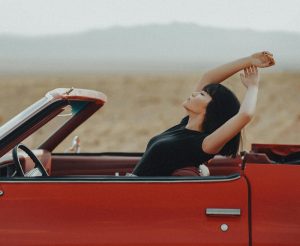 Have you ever thought about being the passenger in an autonomous vehicle? Just sit back and let the car take the wheel? While there are some cars with features that handle steering and lane changes, to date, all fully commercial vehicles sold still require a human to remain attentive in the driver’s seat. It is currently not legal for any vehicle in New Jersey to be fully controlled by a computer. But that may change.
Have you ever thought about being the passenger in an autonomous vehicle? Just sit back and let the car take the wheel? While there are some cars with features that handle steering and lane changes, to date, all fully commercial vehicles sold still require a human to remain attentive in the driver’s seat. It is currently not legal for any vehicle in New Jersey to be fully controlled by a computer. But that may change. A
A  With
With  Though nationally the trend was down,
Though nationally the trend was down,  As Sen. Zwicker suggests, autonomous vehicles provide options never before available to those with disabilities that prevent them from being able to drive themselves. It has been proposed that travel opportunities could increase as much as 14% with the addition of AVs, as public transportation is useful but has many limitations.
As Sen. Zwicker suggests, autonomous vehicles provide options never before available to those with disabilities that prevent them from being able to drive themselves. It has been proposed that travel opportunities could increase as much as 14% with the addition of AVs, as public transportation is useful but has many limitations. If you’ve ever driven around Princeton or down Route 1 at rush hour, you may be wondering if there are benefits for autonomous vehicles on improved traffic flow. It is hard to fully know the answer without having our roads filled with them, but research has shown there is a strong possibility for improvement. One 2023
If you’ve ever driven around Princeton or down Route 1 at rush hour, you may be wondering if there are benefits for autonomous vehicles on improved traffic flow. It is hard to fully know the answer without having our roads filled with them, but research has shown there is a strong possibility for improvement. One 2023  Generative AI (artificial intelligence) is not just the wave of the future, it is the wave of today. You hear about its uses in every sector of life. Government, which ideally should aim for peak efficiency, is using AI at very different levels. The state has taken initiative to utilize it, offering increasing opportunities for agencies to incorporate it into what they do. County and municipal governments, though dabbling, still seem to have a ways to go.
Generative AI (artificial intelligence) is not just the wave of the future, it is the wave of today. You hear about its uses in every sector of life. Government, which ideally should aim for peak efficiency, is using AI at very different levels. The state has taken initiative to utilize it, offering increasing opportunities for agencies to incorporate it into what they do. County and municipal governments, though dabbling, still seem to have a ways to go. Princeton, for example, has barely integrated any uses of artificial intelligence into its operations and systems. The police department has explored opportunities but thus far has not found the tools available to be beneficial, especially with the additional loopholes of security protection needed for much of what they do. Ewing similarly has not shifted any core functions to AI, attempting some basic creative tasks at best, but often finding the human element is still very much essential. This seems to be the norm across New Jersey municipal governments.
Princeton, for example, has barely integrated any uses of artificial intelligence into its operations and systems. The police department has explored opportunities but thus far has not found the tools available to be beneficial, especially with the additional loopholes of security protection needed for much of what they do. Ewing similarly has not shifted any core functions to AI, attempting some basic creative tasks at best, but often finding the human element is still very much essential. This seems to be the norm across New Jersey municipal governments. Mt. Arlington is one of those towns jumping in, having already integrated an AI chatbot into its
Mt. Arlington is one of those towns jumping in, having already integrated an AI chatbot into its  Mercer County is interested, but adoption is going slowly. The capital county has begun to utilize a system called CommsCoach QA, to assist with emergency communications. As calls come in via radio or phone, they are immediately evaluated by AI. Once flagged by the system, they are further reviewed by a human, but the technology enables the team to evaluate the quality of response, identify and reinforce the strengths, document performance trends and provide actionable feedback.
Mercer County is interested, but adoption is going slowly. The capital county has begun to utilize a system called CommsCoach QA, to assist with emergency communications. As calls come in via radio or phone, they are immediately evaluated by AI. Once flagged by the system, they are further reviewed by a human, but the technology enables the team to evaluate the quality of response, identify and reinforce the strengths, document performance trends and provide actionable feedback. At the state level, there is still room to utilize its full potential, but the commitment and efforts are much further along. The New Jersey Artificial Intelligence Task Force was created in October 2023 soon followed by plans for the
At the state level, there is still room to utilize its full potential, but the commitment and efforts are much further along. The New Jersey Artificial Intelligence Task Force was created in October 2023 soon followed by plans for the  The winds are blowing; the air has turned crisp and Christmas music has even started blasting through intercom systems of your favorite stores. There’s no denying Thanksgiving is approaching. To help you shift into the season, read the November issue of Princeton Perspectives,
The winds are blowing; the air has turned crisp and Christmas music has even started blasting through intercom systems of your favorite stores. There’s no denying Thanksgiving is approaching. To help you shift into the season, read the November issue of Princeton Perspectives,  Most relate Thanksgiving to the first known holiday feast of the Pilgrims in Plymouth, MA in 1621. Their three-day harvest event was celebrated along with members of the Wampanoag tribe. While this feast was notable, tribes all around had been honoring their crops for years before Pilgrims made it famous – including native tribes right here in New Jersey. In fact, there is a lot about Thanksgiving that began in the Garden State.
Most relate Thanksgiving to the first known holiday feast of the Pilgrims in Plymouth, MA in 1621. Their three-day harvest event was celebrated along with members of the Wampanoag tribe. While this feast was notable, tribes all around had been honoring their crops for years before Pilgrims made it famous – including native tribes right here in New Jersey. In fact, there is a lot about Thanksgiving that began in the Garden State.


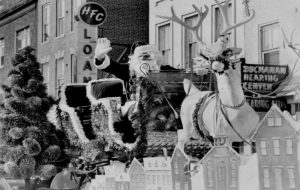 But the tradition of pigskin and turkey-day was not lost altogether. One annual meet-up began locally in Hamilton in 1959,
But the tradition of pigskin and turkey-day was not lost altogether. One annual meet-up began locally in Hamilton in 1959,  Another procession of sorts in the streets that has become synonymous with Thanksgiving is the Turkey Trot. The first known in Mercer County that continues today was the
Another procession of sorts in the streets that has become synonymous with Thanksgiving is the Turkey Trot. The first known in Mercer County that continues today was the 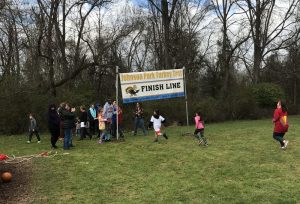 Some Turkey Trots bring together smaller communities and for nearly 20 years, Princeton’s
Some Turkey Trots bring together smaller communities and for nearly 20 years, Princeton’s 
 Did you sign up? Pick up your bib number? Plan your warm, but breathable, attire? Next week, thousands will gather across Mercer County to take part in a Turkey Trot. Are you ready?
Did you sign up? Pick up your bib number? Plan your warm, but breathable, attire? Next week, thousands will gather across Mercer County to take part in a Turkey Trot. Are you ready?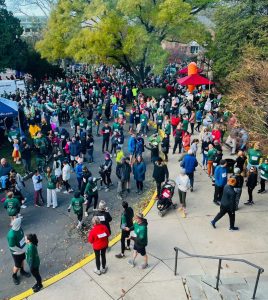 “I had recently moved from Kentucky, where I loved participating in a Thanksgiving morning run each year. When I couldn’t find a similar event in the Princeton area, I thought it might be a great way to bring people together—to build a little community spirit on Thanksgiving morning and do something good for others at the same time,” Rev. Jeanes recalls. “None of us could have imagined how quickly the Turkey Trot would grow, capturing the energy and enthusiasm of the wider Princeton community. The outpouring of support—from local runners, sponsors, and neighbors—has been both humbling and inspiring.”
“I had recently moved from Kentucky, where I loved participating in a Thanksgiving morning run each year. When I couldn’t find a similar event in the Princeton area, I thought it might be a great way to bring people together—to build a little community spirit on Thanksgiving morning and do something good for others at the same time,” Rev. Jeanes recalls. “None of us could have imagined how quickly the Turkey Trot would grow, capturing the energy and enthusiasm of the wider Princeton community. The outpouring of support—from local runners, sponsors, and neighbors—has been both humbling and inspiring.” “It’s become a tradition for a lot of families, which is fun to see,” explains Sarah Kempson, a volunteer with the Mercer County Turkey Trot Race Team. “It’s such great energy, so much fun. Families all gather in the picnic area before the start of the race, and at the end of the race. People dress up in fun festive costumes. Teams that sign up are creative and fun. Howard Alter is DJ of the race every year and Steve Shueh, another managing partner, wears a turkey costume and goes along the race and cheers people on.”
“It’s become a tradition for a lot of families, which is fun to see,” explains Sarah Kempson, a volunteer with the Mercer County Turkey Trot Race Team. “It’s such great energy, so much fun. Families all gather in the picnic area before the start of the race, and at the end of the race. People dress up in fun festive costumes. Teams that sign up are creative and fun. Howard Alter is DJ of the race every year and Steve Shueh, another managing partner, wears a turkey costume and goes along the race and cheers people on.”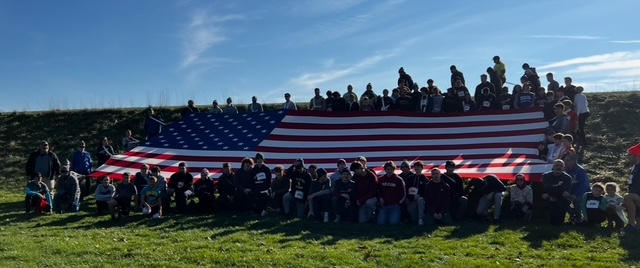 What started as a small fundraiser has truly developed into a community gathering with a run/walk component welcoming grandparents, children and everyone in between. With nearly 1,000 runners last year, it truly was a reunion. At the end of the race each year, everyone from Hopewell Wrestling – youth through alumni – gather for a group photograph.
What started as a small fundraiser has truly developed into a community gathering with a run/walk component welcoming grandparents, children and everyone in between. With nearly 1,000 runners last year, it truly was a reunion. At the end of the race each year, everyone from Hopewell Wrestling – youth through alumni – gather for a group photograph. “What is difficult to put into words is the energy that is so palpable onsite in both the pre- and post-race gathering of runners and volunteers,” says Bill Hackett, Co-Director of Trinity Turkey Trot. “It is not just a race. It is an event that changes lives – for the participants and those who benefit from the important service provided by our supported charities.”
“What is difficult to put into words is the energy that is so palpable onsite in both the pre- and post-race gathering of runners and volunteers,” says Bill Hackett, Co-Director of Trinity Turkey Trot. “It is not just a race. It is an event that changes lives – for the participants and those who benefit from the important service provided by our supported charities.”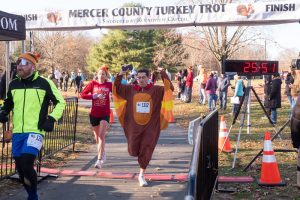 Corporate sponsorships enable race proceeds to be donated. The more the races grow, the more they can provide. Solidifying these sponsors, arranging runner sign-ups, handing out bid numbers, coordinating with local police to secure the routes and more are often done by volunteers who have other day jobs. But, for many, it is a burden worth taking on.
Corporate sponsorships enable race proceeds to be donated. The more the races grow, the more they can provide. Solidifying these sponsors, arranging runner sign-ups, handing out bid numbers, coordinating with local police to secure the routes and more are often done by volunteers who have other day jobs. But, for many, it is a burden worth taking on.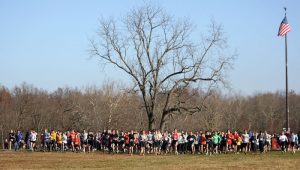 “Our Turkey Trot was founded primarily as a means to fund the needs of our wrestling community. An ancillary social benefit grew naturally from that. Connecting the different eras of our wrestling community, and our township, all together on the same day, has become a treasured asset and expectation of our race.”
“Our Turkey Trot was founded primarily as a means to fund the needs of our wrestling community. An ancillary social benefit grew naturally from that. Connecting the different eras of our wrestling community, and our township, all together on the same day, has become a treasured asset and expectation of our race.” As we do every October, Princeton Perspectives is providing you with information about every candidate on the ballot to help you vote informed in the upcoming General Election. There is a lot at stake, as a new governor is to be chosen, the entire Assembly is up for grabs, and many county and local leadership positions are on the table.
As we do every October, Princeton Perspectives is providing you with information about every candidate on the ballot to help you vote informed in the upcoming General Election. There is a lot at stake, as a new governor is to be chosen, the entire Assembly is up for grabs, and many county and local leadership positions are on the table.